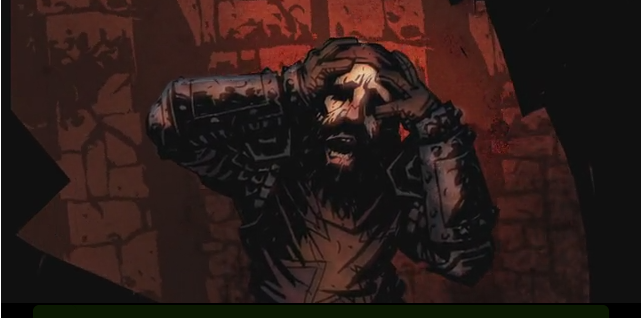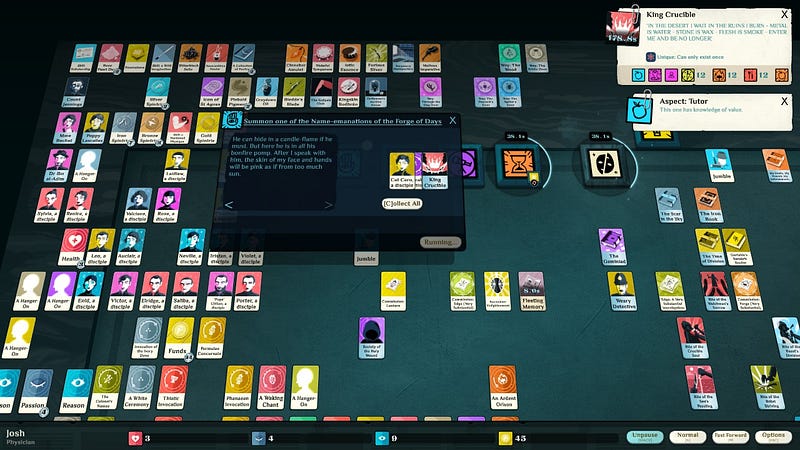Trending
Opinion: How will Project 2025 impact game developers?
The Heritage Foundation's manifesto for the possible next administration could do great harm to many, including large portions of the game development community.

Featured Blog | This community-written post highlights the best of what the game industry has to offer. Read more like it on the Game Developer Blogs or learn how to Submit Your Own Blog Post
Today's post returns to the concept of grinding in video games, and how it is often used to pad out a game and can hurt it in the long run.

Grind is a concept that no gamer wants to experience, and yet, it’s very hard to nail down what it is. Some genres like to boast that they’re about grinding, but they may not really be a grind. We’ve talked about the difficulty of defining grind previously, and it’s still an important element for designers to consider.

“Grinding” or “Grind” can mean different elements depending on the genre and player, but for me and for our post today, we’re going to define it as this:
Grind: The period of time in a game when the player’s ability to progress is reduced to a few set options, and everything else will not move them forward
One of the key signs that your game becomes a grind is when there are things the player could be doing, but doing them would be a waste of time at this point. A famous example is from the MMO genre, and if the player runs out of quests at their level range to do, doing lower level quests will not earn them anywhere near the experience needed to keep going.
Due to new quests and content locked to certain level thresholds, if you get stuck in a position where there are no quests available, you will have to grind regular enemies until you hit the next chain.

In singleplayer games, grinding exists in different forms. For strategy games, a grind could occur during a slow mid or end-game. In this case, the player knows how to win or to proceed, but they need to go through the motions until the time comes. The RPG genre has been built on the use of grinding as a way to get around a hard fight.
For many players, the act of grinding is viewed as part of the process, but it’s not a good process to have.
The easiest way to view grind in a video game is as a form of padding the game out. This gets to the point of the quality vs. quantity debate when it comes to game lengths.
While it may seem great to have a game that requires 30+ hours to get through, the big question is: How many of those hours are actually engaging? I’ve lost count of the number of games that just dragged on at the mid-game to the point that it made the game worse.
One of the most annoying aspects is when the player knows what to do to win, but they’re unable to move forward due to the game’s design. Playing through Cultist Simulator, I’m at a point where progress is no longer guaranteed, but up to the RNG of what rewards I get. Out of all the possible rewards I can get, there’s only one specific item at this point I need to win.

As another major source of grinding, RNG can be an absolute killer for progression in video games. In our previous talk about grinding in video games, I said that the player should always feel like they’re moving forward no matter what. With RNG progression, the player will no longer feel like they’re making guaranteed progress.
One last example before we move on is having the player repeat content that they’ve already done. Some cases would be having repeatable quests for resources, having to fight the same bosses again and again, and so on. This goes back to the comment that there are series where grinding is considered a part of the process; such as Monster Hunter or the idle genre.
To mitigate the feeling of grind, while it is on a case by case basis, but there are several tips that are universal in game design.
To eliminate or mitigate grind, the first step for any game regardless of design is to look at the trouble areas of your game. At what point do you see people quitting, and is there a period in your game that is taking the longest to get through?
From there, it comes down to adding in more viable options for progressing. One of the simplest, yet effective systems is the concept of “milling.” Milling is a term used in CCG and F2P-styled games, and is the act of taking a resource or item you don’t want, and converting it to something you do.
The more ways for a player to make progress will decrease the chance of the game becoming a grind. Some titles will let any action the player does contribute towards experience or leveling up.
The Guild Wars 2 example mentioned was a good case of using scaling as a way to make every quest in the game viable for all players.
In the past, it was considered acceptable for games to take dozens of hours to complete, and to pad out content to make sure that people get their money’s worth. In today’s market with so many games being released daily, it’s more important in my opinion to have a strong game from start to finish; even if it’s on the shorter side.
If people want more, you can always introduce alternate modes or harder difficulties, but your baseline experience should be the best possible version of your game, no matter the length. There are more ways to make a game longer than there are to make it shorter. Not every gameplay loop can be designed (or is engaging) for dozens of hours.
For you reading this: Can you think of games that were hurt for being too long?
Read more about:
Featured BlogsYou May Also Like